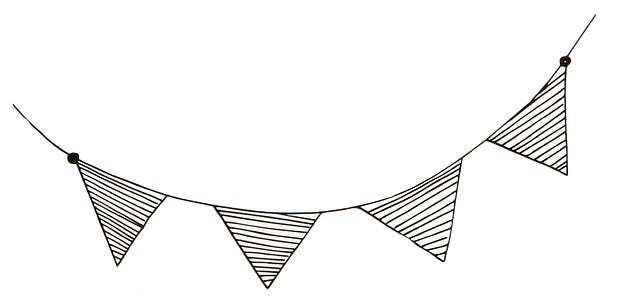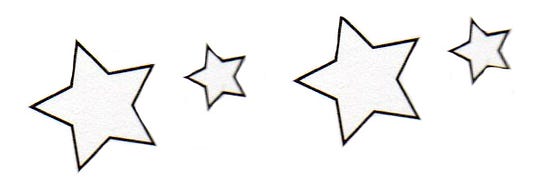To Be An Extraordinary Artist You Need To Be Extraordinary At These Things As Well
The creative sector is on a tight budget; downsizing, outsourcing, merging or collapsing. Art institutions, publishing companies, record labels, agents, managers, publicists, editors, and producers have so far supported and guided the artist by protecting them from the full force of the marketplace.
But with the decline of the “middle man” the artist is left to deal with all aspects of making a living from art — the artist has no choice but to take on many different roles and learn how to be good at them.
Every writer, artist, and musician with a website understands the importance of an online presence.
The internet has provided huge opportunities and promise and I think it is vital to use the internet as a key marketing tool to promote and sell your work as well as to connect to your audience and customers ( who we have to find ourselves). The internet also allows us to sit next to and compete with the top players in the industry — surely that’s a good thing right?
Musicians put their musing online. They explore streaming and video distribution channels and put their work out there to achieve the most exposure for their brand and name. The same principle applies to your business blog if you have one. Distribution of your content is key if you want to get your name in front of more readers.
There are many musicians who have successfully used social media to their advantage and got rich and well known along the way.
For example, Justin Bieber was posting homemade videos when he was a teenager, and with his homemade YouTube videos, he convinced executives at Island Def Jam Recordings to give him a record deal.
Ross Tran, is a visual artist with a successful YouTube channel, he started his channel Ross Draws at the end of 2011. His videos have millions’ of viewers and as he continues to grow his channel so does he grows his opportunities — conventions, signings, gigs. And with every opportunity, he is earning more money to create more art.
How often have you been told, “Just get your name out there”?
It’s the piece of advice we creative types get told over and over again.
Artists are not just artists anymore
Artists need to be competent in many areas. If you have a full-time job or family to look after there is hardly enough time to create art and plan for your next project, let alone figure out how to get your work out there.
To grow a creative business an artist needs to be committed, 110%.
As an Artist you are expected to:
· Create an intriguing and thought provoking body of work
· write bestseller books
· be your own boss
· be your own business
· build a brand
· create your network
· establish a social media presence.
· be your own agent
· be your own label
· be your own marketing department
· be your own accounting department
· be your own salesperson and order manager
· and much more….
All this, not surprisingly requires time and skills way beyond the actual production/creation of art.
With so much to do and so much to learn it is clear that an artist does not have time to dedicate 1000’s of hours to one skill only and become a master of it.
Instead, it feels like we are morphing into a Jack’s of all trades. Artists used to spent many years training and learning one discipline and worked towards developing one artistic identity. You were either a painter, a sculptor, a writer, a poet, a musician or a dancer.
And there is no denying, younger artist are fully aware that 10000’s of social media followers are far more important and influential to their career than putting in 10000’s of hours to refine one skill.
Claps, followers, views, retweets, likes, stumbles etc. make up the new landscape of approval and validation. It’s no longer only the word of the gallery or the opinion of the art critic, it’s the public, the social media followers, the blog readers, the people who leave a trail of feedback and comments all over the internet. The general public is the taste-makers or critiques of our time, and have more combined power than individual art critics.
The arts are a reflection of our times
The arts have always been very accurately reflecting changes in society. Cultural changes are mirrored in all art forms from music, dance to painting and sculpture.
The effect of galleries closing their doors, cutting of art funds, decline of exhibitions and gallery shows, the impact of social media on art and the little time there is for artist to actually create, leaves no choice but to rethink how we produce art and put ourselves out there.
The rise of the artistic go-getter
YouTube Space LA, a film production warehouse in California is free to use for YouTube members with at least 10,000 followers.
The Space is used by thousands and beautifully represents this new breed of artist, that blends artistic skills with business skills — they are artistic go-getters.
These artistic go-getters don’t rely on industry insiders to help them get their work out there, to give them a television show, a record deal, they have built their own audiences that translate into big bucks. They are utilizing platforms like YouTube Instagram and Vine, where brands have started paying users with large followings to mention their products.
Photographers and video producers are also finding audiences and incomes — with the help of social media.
I have recently read the inspiring story of New York photographer Kevin Lu who bought his first camera in 2012. Within a year he had so many followers on Instagram that he was able to quit his job as an engineer. Today, he charges brands up to $3,000 for a single post.
There is no such thing as a “sell out”
In a world where fans expect content to be free, brands are stepping up where consumers have not. There is no such thing as a “sell-out” because these brands who pay the artist are enabling them to make art.
Where to start and how to stay focused without getting overwhelmed
No doubt, social media helps provide global exposure for the artist, and I find it is exciting to see that younger and unrecognized artists are able to build a substantial audience for their work online before even considering gallery representation or working with a record label.
Back in 2010, I decided to set up an art business. I wanted to continue to sell works of art of fellow artists whilst having to freedom to continue with my art practice.
Looking back now, setting up my art platform was very tough, the amount of stuff there was to learn was just mind-boggling and very overwhelming. I could not have reached my goal without support and without collaborating with galleries, business, artists and wonderful individuals beside me.
Don’t underestimate the power of your network. Your friends and colleagues can help you establish your goals and guide you along the way, one step at the time:
· Surround yourself with people who support you
· Establish your goals
· Make a master-plan
· Establish what steps need to be done to reach your goal
· Establish what you need to learn
· Research, find out how other artists have made it
· Break down your big goal into small manageable weekly tasks
· Put your tasks in your calendar
· Block off time in your calendar for each task
· Don’t let anything come between you and your tasks.
Don’t get overwhelmed by the enormity of it all, keep in mind that big goals get achieved by breaking it down into small tasks and doing them one by one. Plan out all the individual steps needed to accomplish your goal.
Get help if you are not sure which steps you will need to take to accomplish your goal.
There are many ways of to figure this out, for example:
· Ask fellow artists
· Consult with more experienced artists or industry experts who have already gone through this process, they may be able to help by sharing what steps they took
· Network, ask question on industry-specific forums
· Purchase a book or search online for a guide or manual
· Be open to learning new tasks and skills if needed and keep in mind that it’s impossible to know everything. Keep researching and asking until you can create a realistic action plan.
Celebrate the little milestones


It is important to celebrate the little milestones along the way. Celebrate, and also support, collaborate and work with other artists, by doing this you will create your own network and infrastructure.
The life of an artist has always been full of risk and uncertainty, but there is also a layer of freedom which allows for experimentation, risk-taking and trying out new ways of doing business and creating art.
Flexibility, multitasking, and cross-collaboration are the way forward.


Technique or expertise is not the point
Reading bios, here on medium or other social media platforms I can’t help but notice that most of the people are multi-skilled. Artist & author, Artist & designer, Musician & writer, Photographer & writer, and much, much more….
And that’s exactly the point, we don’t have the time and luxury to only focus on one skill, the merging of different industries and creative multitasking is becoming the norm. A far cry from the times where an artist would dedicate his/her whole career to be the master of one skill.
That being said, it just shows that the art ecosystem is becoming more complex and rich and we need to be flexible and able to multitask. Technique or expertise is not the point. The point is versatility and like any good business, we try to diversify. One step at a time.
Art is so individual, it is about your voice and how you translate it into your chosen medium/mediums. It takes time to create a name for yourself, persevere! Many small breaks will create a sustainable career if you take one step at a time towards your future goals. Feel good about your choices and stay connected to your creative process.

